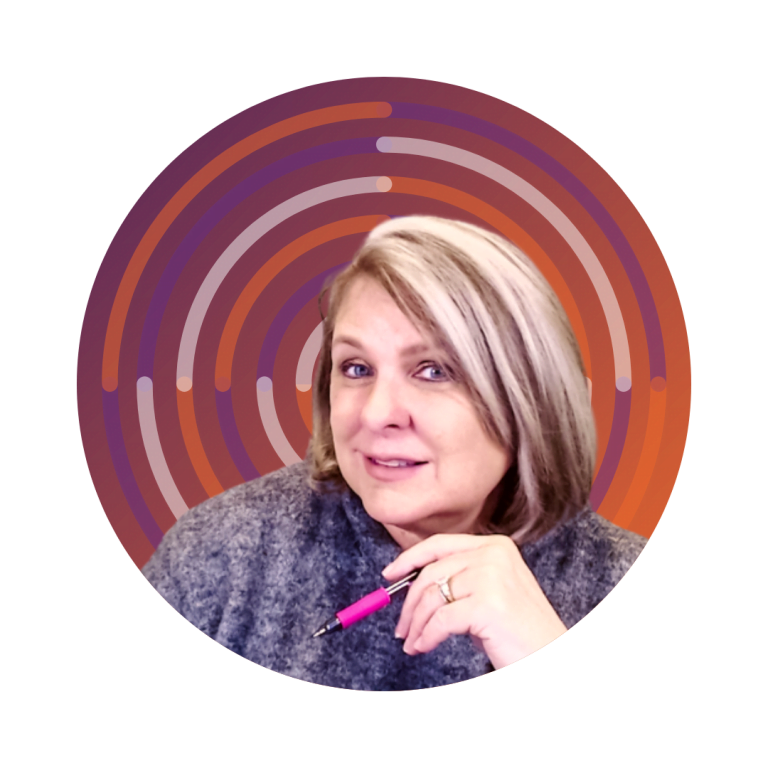Local content marketing empowers small businesses to boost their visibility and connect with customers in their community. By creating and sharing relevant, location-specific information, you can establish your brand as a trusted local resource.
This approach not only attracts potential customers but also fosters a sense of loyalty among existing ones, as they see your business actively participating in and contributing to the local scene. In this article, we’ll explore ten effective strategies to elevate your small business through local content marketing.
Key Takeaways
- Local content marketing helps small businesses dominate their market and connect with the community
- Visual content, such as photos and videos, effectively showcases local appeal and engages customers
- Email marketing with personalized campaigns nurtures local prospects and drives customer engagement
- Measuring and adjusting strategies based on local feedback ensures content remains relevant and effective
- Scaling efforts across markets requires a replicable framework adaptable to each location’s unique characteristics

Crafting Your Local Content Marketing Blueprint
Crafting a local content marketing blueprint is essential for small businesses aiming to dominate their market. This strategic approach involves analyzing data to identify your target local audience, defining a unique value proposition that resonates with your community, setting clear objectives for your local market, and creating a content calendar aligned with local events.
By tailoring your business marketing efforts to your specific locale, you’ll maximize the effectiveness of each marketing channel and develop a cohesive strategy that speaks directly to your target customers.
Identifying Your Target Local Audience
Identify your target local audience by analyzing your sales data, website traffic, and social media engagement. Focus on demographics, interests, and behaviors specific to your local area. Use this information to create detailed buyer personas that represent your ideal local customers.
Leverage internet tools and platforms to gather insights about your local market. Conduct surveys, analyze search trends, and study local competitors to understand what resonates with your community. Pay attention to local events, traditions, and concerns that may influence your audience’s preferences and needs.
Refine your advertising strategies to capture the attention of your local target audience. Tailor your content, messaging, and offers to address their unique pain points and aspirations. By understanding your local audience intimately, you’ll be better equipped to create compelling content that drives engagement and conversions.
Defining Your Unique Local Value Proposition
Define your unique local value proposition by identifying what sets your business apart from competitors in your area. Leverage tools like HubSpot‘s customer relationship management system to analyze customer data and uncover insights about your local market. Use this information to craft a compelling value proposition that resonates with your community‘s specific needs and preferences.
Incorporate local elements into your web design to reinforce your unique value proposition and create a strong connection with your audience. Optimize your website for local search engine visibility, ensuring that your value proposition is prominently displayed and easily discoverable by potential customers in your area.
Utilize Google Analytics to track the performance of your local value proposition across various marketing channels. Monitor key metrics such as website traffic, conversion rates, and customer engagement to refine your approach and ensure that your unique selling points continue to resonate with your local audience.
Setting Clear Objectives for Your Local Market
Set clear objectives for your local market by defining specific, measurable, achievable, relevant, and time-bound (SMART) goals. Use analytics tools to track key performance indicators (KPIs) that align with your business objectives, such as increasing brand awareness, generating leads, or driving sales in your local area.
Implement targeted online advertising campaigns to reach your local audience and drive traffic to optimized landing pages. Create compelling calls-to-action (CTAs) that encourage visitors to take desired actions, such as signing up for your email marketing list or making a purchase.
Establish benchmarks for success and regularly evaluate your progress using analytics data. Adjust your local content marketing strategy as needed to improve performance and achieve your objectives, focusing on activities that deliver the highest return on investment for your small business.
Drafting a Content Calendar Tailored to Local Events
Draft a content calendar tailored to local events to enhance your search engine optimization efforts and improve your local search rankings. Research upcoming community events, holidays, and seasonal activities in your area, and plan content that aligns with these occasions. This approach will help you capitalize on local search trends and increase your visibility in search engine results pages.
Incorporate user-generated content and customer testimonials into your calendar to boost customer engagement and credibility. Encourage your local audience to share their experiences with your business on social media platforms, and feature this content in your marketing materials. This strategy will help you build trust with potential customers and improve your lead generation efforts.
Create a mix of content types, including blog posts, videos, and infographics, to cater to different audience preferences and maximize your reach. Use local keywords and location-based tags in your content to improve your chances of appearing in local search results. Regularly review and adjust your content calendar based on performance metrics to ensure you’re consistently delivering value to your local audience.
Local events breathe life into your content strategy. Tap into the pulse of your community for fresh, engaging ideas.

Leveraging Local Events for Content Inspiration
Leveraging local events for content inspiration offers a powerful opportunity to boost your small business‘s visibility and profit. By tapping into community activities, you can create engaging content that resonates with your audience, enhances your link building efforts, and drives a higher return on investment. This approach requires thorough research into your local area’s calendar and a strategic content creation plan.
From spotting opportunities in community gatherings to crafting unique promotional campaigns, real-time event coverage, and festivity-themed content, you’ll discover numerous ways to connect with your local audience and strengthen your brand‘s presence.
Spotting Opportunities in Community Activities
Spot opportunities in community activities by regularly monitoring local event calendars, social media groups, and community boards. Use web analytics tools to identify trending local topics and events that align with your business offerings. This proactive approach allows you to create timely and relevant content that resonates with your target audience.
Leverage artificial intelligence-powered social listening tools to track conversations about upcoming community events. Experiment with different content formats, such as blog posts, videos, or infographics, to showcase your involvement in these activities. This strategy helps build social proof and establishes your business as an active community member.
Invest time in attending local events and networking with organizers and participants. Use these interactions to gather insights and create unique content that highlights your business‘s connection to the community. Track the performance of your event-related content using web analytics to measure its impact on your overall local content marketing strategy.
Creating Content That Resonates With Local Festivities
Create content that resonates with local festivities by infusing your digital marketing efforts with the spirit of community celebrations. Develop web pages and blog posts that highlight upcoming events, offering valuable information to consumers while showcasing your business‘s involvement. Collaborate with local experts to provide unique insights and behind-the-scenes content that sets your brand apart.
Leverage social media platforms to share real-time updates and engaging visuals from local festivities. Use hashtags and geotags to increase visibility and encourage user-generated content that amplifies your brand‘s presence. Incorporate festive themes into your web development projects, creating interactive elements that capture the essence of local celebrations.
Produce multimedia content that brings local festivities to life for your audience. Create video interviews with event organizers, craft informative infographics about festival histories, or develop interactive maps showcasing event locations. By diversifying your content formats, you’ll cater to various consumer preferences and strengthen your position as a go-to source for local event information.
Engaging Your Audience With Real-Time Event Coverage
Engage your audience with real-time event coverage by leveraging your content management system to quickly publish updates from local happenings. Use live-blogging features to share moment-by-moment insights, creating a sense of immediacy and excitement for your followers. This approach bridges the gap between online and offline experiences, making your brand a valuable source of local information.
Integrate your real-time coverage into your broader local content marketing strategy, ensuring consistency across all channels. Encourage audience participation by soliciting questions, comments, and user-generated content during events. This interactive approach can be particularly effective for retail businesses looking to drive foot traffic and boost sales during local festivities.
Analyze the performance of your real-time event coverage using marketing analytics tools to refine your approach. Track engagement metrics, such as likes, shares, and comments, to understand which types of content resonate most with your audience. Use these insights to improve your local content marketing strategy for future events, maximizing the impact of your real-time coverage efforts.
Using Local Events for Unique Promotional Campaigns
Leverage local events to create unique promotional campaigns that boost your small business‘s reputation and visibility. Conduct thorough keyword research to identify event-related terms that resonate with your target audience. Use these insights to craft compelling content that aligns with local happenings and attracts valuable backlinks to your website.
Consider outsourcing specific tasks, such as graphic design or video production, to create high-quality promotional materials that capture the essence of local events. Utilize social media management tools to schedule and distribute your event-related content across multiple platforms, maximizing your reach and engagement with potential customers.
Track the performance of your event-based promotional campaigns using analytics tools to measure their impact on your business objectives. Adjust your strategies based on these insights, focusing on the most effective tactics to drive traffic, generate leads, and increase sales during local events.
Community involvement amplifies your local event coverage. Engage with attendees and organizers to build lasting connections.

Building Strong Relationships Through Community Engagement
Building strong relationships through community engagement is a cornerstone of effective local content marketing for small businesses. By actively participating in your community, you can forge meaningful connections that transcend traditional marketing approaches. This strategy allows you to reach your target audience more authentically, potentially leading to increased leads and customer loyalty.
While the initial investment of time and budget may seem daunting, the long-term benefits far outweigh the costs. From collaborating with local businesses to partnering with influencers, participating in community service, and organizing events, these engagement strategies can help you create compelling content for various platforms, including podcasts.
By focusing on community involvement, you’ll not only enhance your brand‘s reputation but also create opportunities for organic growth and customer acquisition at a competitive price point.
Strategies for Collaborating With Local Businesses
Boost your credibility by partnering with complementary local businesses to create joint marketing campaigns. Develop cross-promotional strategies that showcase each company’s strengths and offer added value to your shared customer base. This collaborative approach can expand your reach and establish your business as a trusted local resource.
Implement a referral marketing program with nearby businesses to tap into new customer networks. Design a mobile app that facilitates easy referrals and tracks rewards for both customers and partnering businesses. This tech-savvy approach can streamline the referral process and incentivize ongoing collaboration.
Organize joint workshops or events with local businesses to demonstrate your combined expertise and superior customer service. Focus on creating memorable experiences that highlight the unique strengths of each participating company. These collaborative efforts can foster a sense of community among local businesses while providing valuable content for your local content marketing channels.
Partnering With Local Influencers for Wider Reach
Incorporate influencer marketing into your overall local content marketing plan to expand your reach within the local community. Identify and engage with local influencers who align with your brand values and have a strong following among your target audience. This strategic partnership can help increase your visibility and credibility, ultimately driving revenue for your small business.
Leverage the knowledge and expertise of local influencers to create compelling content for your WordPress website and social media channels. Collaborate on blog posts, videos, or podcasts that showcase your products or services in a way that resonates with their followers. This approach can help you tap into new market segments and establish your business as a trusted local authority.
Implement a tracking system to measure the impact of your influencer partnerships on your business goals. Analyze key performance indicators such as website traffic, engagement rates, and conversions to determine the effectiveness of your influencer marketing campaigns.
Use these insights to refine your strategy and maximize the return on investment from your influencer collaborations.
- Identify relevant local influencers
- Develop collaborative content strategies
- Measure and optimize campaign performance
- Foster long-term relationships with influencers
- Integrate influencer content across marketing channels
Participating in Community Service as Content
Participate in community service initiatives and create content showcasing your involvement to enhance your small business‘s reputation. Document your volunteer efforts through high-quality photos and videos, sharing them on your social media platforms to demonstrate your commitment to social responsibility. This approach can help you build trust with potential customers while keeping your marketing costs low.
Leverage your community service experiences to create engaging blog posts and social media marketing content that resonates with your target audience. Share stories of how your business is making a positive impact in the local area, and use these narratives to drive traffic to your website. By optimizing this content for search engines, you can improve your visibility in local search results and attract more potential customers.
Collaborate with local non-profit organizations to organize joint community service events, and use these opportunities to create compelling content for your marketing channels. Consider offering special promotions or discounts to customers who participate in these initiatives, creating a win-win situation for your business, the community, and your target audience.
This strategy can help you differentiate your brand from competitors while potentially reducing your insurance costs through improved community relations.
- Identify local community service opportunities
- Document your involvement through photos and videos
- Share experiences on social media and your website
- Collaborate with non-profit organizations
- Offer incentives for customer participation
Organizing or Sponsoring Local Events
Organize or sponsor local events to enhance your small business‘s user experience and community engagement. Create memorable experiences that showcase your products or services while providing value to attendees. Collect feedback and email addresses during these events to build your customer database and improve future local content marketing efforts.
Leverage technology to streamline event planning and registration processes, ensuring a smooth experience for participants. Implement a loyalty program that rewards customers for attending your events, encouraging repeat business and fostering a sense of community around your brand. Use these events as opportunities to gather insights about your target audience‘s preferences and needs.
Maximize the impact of your events by creating content before, during, and after each gathering. Share behind-the-scenes preparations, live updates, and post-event recaps across your marketing channels to extend the reach of your efforts. Analyze the data collected from these events to refine your local content marketing strategy and improve your overall customer experience.
Community connections fuel local success. Harness that momentum to boost your online presence.

Optimizing Your Local SEO for Better Visibility
Optimizing your local SEO is crucial for small businesses aiming to dominate their local market landscape. By implementing targeted strategies, you can significantly improve your visibility in search results and attract more potential customers.
This process involves harnessing the power of local keywords, creating conversion-focused landing pages, managing your Google My Business listing effectively, and encouraging reviews from local customers.
Leveraging automation tools like Mailchimp can streamline your local content marketing efforts while implementing robust organization software can help you manage your local SEO initiatives more efficiently. By focusing on these key areas, you’ll create a solid foundation for your local content marketing strategy and set your small business up for success in the digital realm.
Harnessing the Power of Local Keywords
Harness the power of local keywords to boost your small business‘s visibility in search results. Conduct thorough research to identify location-specific terms that your target audience uses when searching for products or services like yours. Incorporate these keywords naturally into your website content, meta descriptions, and page titles to improve your local search rankings.
Leverage social media platforms to amplify your local keyword strategy. Use relevant hashtags that include your location and industry to increase your visibility in local searches. Encourage customers to use these hashtags when sharing their experiences with your business, fostering word-of-mouth marketing and enhancing your online presence.
Implement a customer loyalty program that rewards customers for engaging with your brand online. Incentivize customers to leave reviews, share content, and use your local keywords in their social media posts. This approach not only improves your search engine rankings but also encourages repeat business and positive customer behavior:
- Research location-specific keywords
- Incorporate keywords into website content
- Use local hashtags on social media
- Encourage customer engagement with keywords
- Implement a loyalty program tied to online interactions
Creating Local Landing Pages That Convert
Create local landing pages that convert by tailoring your content to specific geographic areas. Optimize these pages for organic search results by incorporating location-based keywords and relevant information about your products or services. Use tools like Search Engine Atlas to research competitive keywords and identify opportunities to outrank your competition.
Design your local landing pages with conversion in mind. Include clear calls-to-action, contact information, and customer testimonials specific to each location. Tag your pages with appropriate schema markup to enhance their visibility in search engine results pages and local business listings.
Leverage your local landing pages as a valuable asset in your local content marketing strategy. Create unique, engaging content for each page that addresses the specific needs and interests of your target audience in that area. Monitor the performance of your landing pages using analytics tools and continuously refine your approach to maximize conversions:
- Research location-specific keywords
- Incorporate customer testimonials
- Use schema markup for enhanced visibility
- Create unique content for each local page
- Monitor and optimize page performance
Managing Your Google My Business Listing
Manage your Google My Business listing effectively to boost your local search visibility and drive web traffic to your small business. Claim and verify your listing, ensuring all information is accurate and up-to-date. This best practice establishes your business as a reliable resource for potential customers searching for local products or services.
Optimize your listing by adding high-quality photos, responding promptly to customer reviews, and regularly posting updates about your business. These actions demonstrate your commitment to customer satisfaction and help promote your business to local searchers. Keep your business hours, contact information, and service offerings current to maintain trust with potential clients.
Utilize Google My Business insights to track your listing’s performance and identify areas for improvement. Monitor how customers find your business and which actions they take after viewing your listing. Use this data to refine your local SEO strategy and enhance your overall online presence, ultimately driving more foot traffic and conversions for your small business.
Encouraging Reviews From Local Customers
Encourage reviews from local customers to boost your small business advertising efforts and improve your local SEO. Implement a streamlined process for requesting feedback, such as sending follow-up emails or text messages after a purchase. Optimize your Google Business Profile to make it easy for customers to leave reviews directly on your listing.
Leverage your SEO services to create a dedicated review page on your website, showcasing positive testimonials and providing clear instructions for leaving feedback. Offer incentives, such as small discounts or exclusive content, to motivate customers to share their experiences. This approach can contribute to sales growth by building trust and credibility with potential clients.
Train your staff to actively seek reviews from satisfied customers during in-person interactions. Respond promptly and professionally to all reviews, both positive and negative, to demonstrate your commitment to customer satisfaction. By consistently gathering and showcasing local reviews, you’ll enhance your online reputation and improve your visibility in local search results.
Local businesses thrive on storytelling. Social media platforms offer the perfect stage to showcase your brand‘s unique narrative.

Telling Your Local Brand Story Through Social Media
Telling your local brand story through social media is a powerful way to enable meaningful connections with your target audience. By selecting the right platforms, sharing local stories, engaging with customers, and showcasing testimonials, you can create a robust social media presence that supports your small business SEO efforts and drives traffic to your business page.
This approach allows you to build a strong local following, nurture leads through your sales funnel, and ultimately convert social media engagement into tangible business results. When combined with targeted ads, your social media strategy can become a cornerstone of your local content marketing efforts, helping you stand out in a competitive marketplace and foster lasting relationships with your community.
Selecting the Right Platforms for Your Local Audience
Select the right social media platforms for your local audience by analyzing your target market‘s preferences and behavior. Research which platforms are most popular among your local demographic, considering factors such as age, interests, and online habits. Use Google search trends and platform-specific analytics to determine where your potential customers spend their time online.
Focus your small business marketing efforts on platforms that align with your brand image and offer the best opportunities for engagement. Consider the visual nature of platforms like Instagram or Pinterest if your products or services lend themselves well to image-based content. Conversely, platforms like LinkedIn may be more suitable for B2B businesses targeting local professionals.
Monitor the performance of your social media efforts across different platforms and adjust your strategy accordingly. Track key metrics such as engagement rates, click-throughs, and conversions to determine which platforms yield the highest percentage of success for your business. Regularly reassess your platform choices to ensure you’re maximizing your reach and connecting effectively with your local audience.
Sharing Local Stories That Connect
Share local stories that connect by highlighting the unique aspects of your community‘s commerce and trade. Showcase how your small business contributes to the local economy and supports other businesses in the area. This approach can help you build trust and rapport with your audience while demonstrating your commitment to the community.
Create engaging content that tells the stories of local customers, employees, or partners. Use conversion rate optimization techniques to craft compelling narratives that resonate with your target audience and encourage them to take action. Consider offering an ebook featuring a collection of these local stories as a lead magnet to grow your email list and nurture potential customers.
Implement personalization strategies to tailor your local stories to different segments of your audience. Use data-driven insights to deliver relevant content that speaks directly to the interests and needs of specific customer groups. This targeted approach can help you forge stronger connections with your local audience and drive more meaningful engagement on social media platforms.

Engaging With Local Customers on Social Media
Engage with local customers on social media by crafting compelling content that resonates with their interests and needs. Use storytelling techniques to share authentic experiences and showcase your brand‘s personality. Encourage interaction through polls, questions, and user-generated content campaigns that highlight your local community.
Leverage data-driven marketing strategies to optimize your social media engagement. Analyze metrics such as reach, engagement rates, and click-throughs to refine your content strategy and posting schedule. Use this information to create targeted campaigns that appeal to specific segments of your local audience.
Enhance your social media presence by integrating it with other marketing channels. Promote your newsletter sign-ups through social media posts, and ensure your web browser and smartphone experiences are seamlessly connected to your social profiles. This multi-channel approach will help you create a cohesive brand experience for your local customers:
| Engagement Strategy | Implementation | Expected Outcome |
|---|---|---|
| Storytelling | Share local customer success stories | Increased brand trust and relatability |
| Data-Driven Marketing | Analyze metrics to optimize content | Improved engagement rates and reach |
| Multi-Channel Integration | Connect social media with other platforms | Cohesive brand experience across channels |
Showcasing Customer Testimonials and Success Stories
Showcase customer testimonials and success stories on your social media platforms to build trust and credibility for your small business. Feature positive feedback from local clients, highlighting their experiences with your products or services. Use eye-catching graphics or create a custom logo for your testimonial posts to make them stand out in users’ feeds.
Leverage search engine marketing techniques to increase the visibility of your customer success stories. Optimize your social media posts with relevant keywords and hashtags to ensure they appear in search results when potential customers are looking for local businesses like yours. Share statistics or data points that demonstrate the tangible benefits your clients have experienced, adding credibility to your claims.
Consider partnering with a local newspaper or media outlet to feature your most compelling customer success stories, expanding your reach beyond social media. Cross-promote these stories across your various marketing channels, including your website and email newsletters, to maximize their impact. Regularly collect and showcase fresh testimonials to keep your content current and demonstrate ongoing customer satisfaction.
Social media amplifies your local brand‘s voice, but email marketing takes the conversation deeper. Let’s explore how to turn casual followers into loyal customers through targeted email campaigns.

Using Email Marketing to Nurture Local Prospects
Using email marketing to nurture local prospects is a powerful strategy for small businesses looking to strengthen their position in the local market. By leveraging software as a service solution, you can segment your email lists, personalize campaigns, and highlight local deals and events to create a unique selling proposition that resonates with your community.
This approach allows you to conduct targeted market research and refine your messaging based on local preferences. You can even incorporate affiliate marketing opportunities to expand your reach and drive additional revenue. By measuring the success of your local email campaigns, you’ll gain valuable insights into your audience’s behavior and preferences, enabling you to continually optimize your local content marketing efforts for maximum impact.
Segmenting Your Emails for Different Local Audiences
Segment your email lists to target different local audiences and increase your market share. Use demographic data, purchase history, and location information to create tailored campaigns that resonate with specific customer groups. This approach allows you to deliver more relevant content and personalized offers, improving engagement and conversion rates.
Leverage Magento‘s advanced segmentation features to automate your email marketing efforts. Create dynamic segments based on customer behavior, preferences, and local events to ensure your messages reach the right audience at the right time. This strategy helps you stay ahead of the algorithm changes and maintain a competitive edge in your local market.
Incorporate press release content and local media management into your segmented email campaigns to boost brand awareness and credibility. Share news about your business‘s involvement in community events or partnerships with local organizations to different audience segments. Use this approach to strengthen your connection with various local customer groups and drive engagement:
| Segment | Content Focus | Desired Outcome |
|---|---|---|
| New Customers | Welcome offers, product introductions | Encourage first purchase |
| Loyal Customers | Exclusive deals, early access to events | Increase customer lifetime value |
| Inactive Customers | Re-engagement campaigns, local incentives | Reactivate dormant accounts |
Personalizing Your Email Campaigns for Local Relevance
Personalize your email campaigns for local relevance by incorporating sustainability initiatives specific to your area. Highlight your small business‘s commitment to eco-friendly practices and showcase partnerships with local environmental organizations. This approach can foster brand loyalty among environmentally conscious consumers and demonstrate your dedication to the community‘s well-being.
Tap into your creativity to develop email content that reflects local culture, events, and traditions. Collaborate with your local chamber of commerce to stay informed about upcoming community activities and incorporate them into your email marketing strategy. By aligning your messages with local interests, you’ll increase engagement and reduce your bounce rate.
Leverage location-based data to deliver hyper-personalized email content that resonates with your local audience. Use dynamic content blocks to showcase nearby store locations, feature products popular in specific neighborhoods, or offer exclusive deals based on local weather conditions. This level of personalization can significantly improve your email performance and strengthen your connection with local customers.
Highlighting Local Deals and Events in Your Emails
Highlight local deals and events in your emails to engage your customer base and drive foot traffic to your small business. Use marketing automation tools to schedule timely promotions that coincide with local happenings, ensuring your offers reach recipients at the most opportune moments. This strategic approach demonstrates your business‘s leadership in the community and keeps your brand top-of-mind for local consumers.
Leverage digital media to create visually appealing email content that showcases your local deals and events. Incorporate eye-catching images, interactive elements, and clear calls-to-action to encourage recipients to take advantage of your offers. Set specific goals for each email campaign, such as increasing event attendance or boosting sales of featured products, and track your results to refine your strategy over time.
Segment your email list based on location-specific data to deliver hyper-relevant content to different parts of your local market. Tailor your deals and event promotions to reflect the unique interests and preferences of each neighborhood or district within your service area. This personalized approach can significantly improve engagement rates and help you build stronger connections with your local customer base.

Measuring the Success of Your Local Email Campaigns
Measure the success of your local email campaigns by tracking key performance indicators that align with your small business goals. Analyze open rates, click-through rates, and conversion rates to gauge the effectiveness of your content and offers. Use this data to refine your customer personas and tailor your messaging to better resonate with your local audience.
Leverage voice search optimization techniques in your email content to improve its discoverability and relevance. Monitor how your email campaigns impact customer success metrics, such as repeat purchases or increased engagement with your brand. This understanding will help you create more targeted and effective email marketing strategies for your local market.
Compare the performance of your email campaigns to traditional marketing methods like yellow pages listings to evaluate their relative effectiveness. Use A/B testing to experiment with different subject lines, content formats, and call-to-action placements to optimize your email performance. Continuously refine your approach based on these insights to maximize the impact of your local email marketing efforts.
Visual content captivates local audiences in ways words alone can’t. Let’s explore how to harness the power of images and video to boost your local content marketing efforts.
Enhancing Your Local Marketing With Visual Content
Enhancing your local content marketing with visual content is a powerful way to capture the essence of your brick and mortar business and connect with your community. By creating compelling visuals that showcase your local area, you can differentiate your brand and attract more customers.
From high-quality photos and engaging videos to informative infographics and user-generated content, visual elements can effectively communicate your unique value proposition and answer common FAQs about your products or services. Whether you’re a local sponsor or charging a fee for your offerings, leveraging visual content can help you stand out in a crowded marketplace and foster a stronger connection with your target audience.
Shooting High-Quality Photos of Your Local Area
Capture the essence of your local area through high-quality photos to enhance your mobile marketing efforts. Invest in professional photography equipment or collaborate with local photographers to showcase your community‘s unique charm. By creating visually stunning content, you’ll improve your url‘s appeal and attract more potential customers to your small business.
Embrace innovation in your visual storytelling by experimenting with different angles, lighting, and compositions. Focus on capturing iconic landmarks, hidden gems, and the vibrant local culture that sets your area apart. These captivating images will serve as powerful tools for your copywriting endeavors, helping you create compelling narratives that resonate with your target audience.
Prioritize efficiency in your photo shoots by planning your locations and shots in advance. Create a shot list that aligns with your local content marketing goals and local events calendar. This strategic approach will ensure you capture a diverse range of images that can be used across various marketing channels throughout the year:
| Photo Type | Purpose | Marketing Channel |
|---|---|---|
| Landmark Shots | Brand Association | Website, Social Media |
| Local Events | Community Engagement | Email Campaigns, Blog Posts |
| Business Exterior | Location Awareness | Google My Business, Local Directories |
Creating Videos That Showcase Local Appeal
Create videos that showcase your local appeal by highlighting unique aspects of your community and integrating them into your content strategy. Use your database of local knowledge to craft compelling narratives that resonate with your target audience. Develop a table of contents for your video series to ensure comprehensive coverage of your area’s attractions, businesses, and events.
Leverage partnerships with local organizations and influencers to expand your reach and add authenticity to your videos. Collaborate with community leaders, artisans, and business owners to tell their stories and showcase the diverse offerings in your area. This approach will help you build a robust video library that serves as a valuable resource for both residents and visitors.
Implement a dashboard to track the performance of your local appeal videos across various platforms. Monitor key metrics such as views, engagement rates, and sharing behavior to refine your video content strategy over time. Use these insights to create more targeted and effective videos that drive interest in your local area and support your small business goals:
- Identify unique local attractions and events
- Collaborate with community partners
- Develop a series showcasing local businesses
- Create behind-the-scenes content of local artisans
- Highlight seasonal activities and festivals
Using Infographics to Present Local Data
Harness the power of infographics to present local data in a visually compelling way for your small business. Use long tail keywords specific to your area to enhance the searchability of your infographics and attract targeted traffic. Create eye-catching visuals that showcase local demographics, income distributions, and consumer trends relevant to your industry.
Develop infographics that highlight your business‘s unique position in the local market. If you operate a clothing store, for example, create visuals that compare your offerings to those of competitors, emphasizing your strengths and unique selling points. Use competitor analysis data to illustrate why customers should choose your business over others in the area.
Tailor your infographics to address specific local concerns or interests. Present income data and economic trends that are relevant to your target audience, demonstrating your understanding of the local market. By providing valuable insights through visually appealing infographics, you’ll position your business as a knowledgeable and trusted resource in your community:
| Infographic Type | Content Focus | Target Audience |
|---|---|---|
| Local Demographics | Age, income, education levels | Potential customers, investors |
| Market Comparison | Your business vs. competitors | Shoppers, brand advocates |
| Economic Trends | Local income, spending habits | Community leaders, partners |
Leveraging User-Generated Content From Locals
Leverage user-generated content from locals to enhance your small business‘s customer experience and boost customer lifetime value. Encourage your customers to share photos, videos, and testimonials about their interactions with your business or experiences in the local area. This authentic content can serve as powerful social proof, influencing potential customers and fostering a sense of community around your brand.
Conduct regular audits of user-generated content to identify the most compelling and relevant pieces for your local content marketing efforts. Curate and showcase this content across your digital platforms, giving credit to the creators and demonstrating your appreciation for their contributions. This approach not only saves you money on content creation but also strengthens your relationship with your customer base.
Foster collaboration with local influencers and content creators to generate high-quality, locally-focused content. Partner with these individuals to create unique experiences or challenges that encourage their followers to engage with your business and share their own content. This strategy can help you tap into new audiences and expand your reach within the local community:
- Create a branded hashtag for user-generated content
- Host photo or video contests featuring local landmarks
- Showcase customer stories on your website and social media
- Collaborate with local influencers for themed content series
- Implement a rewards program for customers who share content
Visual content propels your local content marketing to new heights. Now, let’s explore how to gauge the true impact of your efforts.

Measuring the Impact of Your Local Content Marketing
Measuring the impact of your local content marketing efforts is crucial for small businesses looking to optimize their strategies and demonstrate value to stakeholders. By defining key performance indicators, utilizing analytics to track local engagement, and adjusting your approach based on feedback, you can refine your local content marketing efforts for maximum effectiveness.
This process involves leveraging various tools and techniques, from SMS campaigns to environmentally friendly initiatives, to ensure your message resonates with your local audience. Whether you’re operating in the United States or elsewhere, tracking and reporting success stories can help you gain support for your local content marketing initiatives and drive policy changes within your organization.
By embracing a data-driven approach to content publishing, you’ll be better equipped to make informed decisions and achieve your local marketing goals.
Defining Key Performance Indicators for Local Marketing
Define key performance indicators (KPIs) for your local marketing efforts by focusing on metrics that directly impact your small business‘s bottom line. Consider tracking metrics such as local search rankings, foot traffic, and mobile web conversions to gain insight into the effectiveness of your local content marketing strategies. These KPIs will help you measure the real-world impact of your digital efforts on your local customer base.
Leverage machine learning algorithms to analyze your local marketing data and uncover hidden patterns in customer behavior. Use these insights to refine your message and tailor your content to resonate more effectively with your local audience. By continuously optimizing your approach based on data-driven insights, you’ll maximize the impact of your local marketing campaigns.
Consider collaborating with a freelancer specializing in local marketing analytics to help you interpret your KPI data and develop actionable strategies. This external perspective can provide valuable insights into your performance relative to local competitors and industry benchmarks. By combining expert analysis with your own local knowledge, you’ll be better equipped to make informed decisions about your local content marketing efforts.
Utilizing Analytics to Track Local Engagement
Utilize advanced analytics tools to track local engagement and measure the impact of your local content marketing efforts on millennials and other key demographics. Implement geo-targeting features to gain insights into how different segments of your local audience interact with your content across various platforms. This data-driven approach will help you refine your strategies and ensure your messaging maintains its relevance in your local market.
Analyze user behavior metrics such as time spent on page, bounce rates, and click-through rates to gauge the effectiveness of your local content. Pay close attention to how these metrics vary across different age groups, particularly millennials, to identify trends and preferences specific to your local audience. Use these insights to tailor your content and improve its relevance to your target market.
Leverage social media analytics to monitor engagement levels and sentiment around your local content. Track shares, comments, and mentions to understand how your audience is interacting with and spreading your message within the community. This feedback loop will enable you to continuously optimize your content strategy and maintain its relevance in the ever-changing local landscape.
Adjusting Your Strategy Based on Local Feedback
Adjust your strategy based on local feedback to ensure your local content marketing efforts remain relevant and effective. Conduct regular surveys and focus groups with your local customers to gather insights on their preferences, pain points, and content consumption habits. Use this valuable feedback to refine your messaging, content formats, and distribution channels.
Implement a robust social listening strategy to monitor conversations about your brand and industry in your local area. Pay attention to comments, reviews, and mentions across various platforms to identify emerging trends and address potential issues proactively. This real-time feedback will help you stay agile and responsive to your local audience’s needs.
Analyze the performance of your content across different local segments and adjust your approach accordingly. Identify which types of content resonate best with specific neighborhoods or demographics within your target area. Use these insights to create more targeted and personalized content that drives engagement and conversions:
- Conduct regular customer surveys and focus groups
- Implement social listening tools for real-time feedback
- Analyze content performance by local segments
- Refine messaging based on customer insights
- Adapt content formats to match local preferences

Reporting Success Stories to Stakeholders
Report success stories to stakeholders by crafting compelling narratives that highlight the tangible impact of your local content marketing efforts. Showcase specific examples of how your strategies have improved brand awareness, increased foot traffic, or boosted sales in your local market. Use data visualization techniques to present key metrics in an easily digestible format, making it simple for stakeholders to grasp the value of your initiatives.
Demonstrate the long-term value of your local content marketing efforts by tracking and reporting on customer lifetime value metrics. Illustrate how your local content has contributed to building lasting relationships with customers, leading to increased loyalty and repeat business. This approach will help justify continued investment in your local marketing strategies and secure buy-in from key decision-makers.
Leverage case studies and testimonials from satisfied local customers to add credibility to your success stories. Share these narratives during stakeholder meetings or through regular updates, emphasizing how your local content marketing efforts have addressed specific local challenges or opportunities. By consistently communicating your achievements, you’ll build confidence in your strategies and position yourself as a vital asset to your small business‘s growth in the local market.
Local markets pulse with unique rhythms and preferences. Stay ahead by fine-tuning your content strategy to these dynamic trends.

Adapting Your Content Strategy for Local Market Trends
Adapting your content strategy to local market trends is essential for small businesses aiming to maximize their impact through local content marketing. By keeping a close eye on local developments, tailoring your content to address specific community needs, and conducting A/B tests to determine what resonates with your local audience, you can fine-tune your approach for optimal results.
Staying ahead of the curve with innovative local content ideas will help you maintain a competitive edge and foster stronger connections with your target market. This proactive approach to content strategy allows you to remain agile and responsive to the ever-changing landscape of your local business environment, ensuring that your marketing efforts consistently deliver value to both your customers and your bottom line.
Keeping Tabs on Local Market Developments
Stay informed about local market developments by establishing a robust monitoring system. Set up Google Alerts for key industry terms and local business news to receive timely updates. Regularly review local business publications, Chamber of Commerce newsletters, and community forums to gain insights into emerging trends and opportunities.
Leverage social media listening tools to track conversations and sentiments around local businesses and industries. Follow influential local figures, organizations, and competitors on platforms like Twitter and LinkedIn to stay abreast of market shifts and community needs. This proactive approach will help you identify potential gaps in the market that your content can address.
Attend local business events, networking sessions, and industry conferences to gain firsthand knowledge of market developments. Engage in conversations with other business owners and community leaders to understand their challenges and aspirations. These insights will prove invaluable in shaping your content strategy to meet the evolving needs of your local audience:
- Set up Google Alerts for local business news
- Monitor social media conversations
- Attend local business events and conferences
- Engage with community leaders and influencers
- Analyze competitor strategies and market positioning
Tailoring Your Content to Address Local Needs
Tailor your content to address local needs by conducting thorough research on your community‘s specific challenges and aspirations. Analyze local demographic data, economic indicators, and social trends to identify key issues that resonate with your target audience. Use this information to create content that directly addresses these concerns and provides valuable solutions.
Develop a content calendar that aligns with local events, seasons, and cultural celebrations. Incorporate these themes into your blog posts, social media updates, and email campaigns to demonstrate your understanding of the local context. This approach will help you build stronger connections with your audience and position your business as an integral part of the community.
Collaborate with local influencers, experts, and organizations to create content that tackles pressing local issues. Feature guest posts, interviews, or case studies that showcase how your products or services contribute to solving community problems. This strategy will not only enhance your content’s relevance but also expand your reach within the local market:
| Content Type | Local Focus | Desired Outcome |
|---|---|---|
| Blog Posts | Community Challenges | Establish Thought Leadership |
| Social Media Updates | Local Events | Increase Engagement |
| Collaborative Content | Expert Insights | Expand Local Reach |
A/B Testing to Find What Resonates Locally
Implement A/B testing to discover what content resonates most with your local audience. Create multiple versions of your marketing materials, such as email subject lines, social media posts, or landing pages, with slight variations in messaging, visuals, or calls-to-action. Use specialized A/B testing tools to randomly distribute these versions to different segments of your local audience and track their performance.
Analyze the results of your A/B tests to identify patterns and preferences specific to your local market. Pay close attention to metrics such as click-through rates, conversion rates, and engagement levels for each variation. Use these insights to refine your content strategy and create more targeted messaging that appeals to your local audience’s unique preferences and behaviors.
Continuously iterate on your A/B testing efforts to stay ahead of evolving local trends and preferences. Regularly test new content ideas, formats, and distribution channels to ensure your marketing efforts remain effective and relevant. By adopting a data-driven approach to content optimization, you’ll maximize the impact of your local marketing initiatives and drive better results for your small business:
| Test Element | Variations | Key Metrics |
|---|---|---|
| Email Subject Lines | Local vs. Generic | Open Rates, Click-through Rates |
| Landing Page Layout | Image-heavy vs. Text-focused | Conversion Rates, Time on Page |
| Call-to-Action Phrasing | Urgent vs. Informative | Click Rates, Form Submissions |
Staying Ahead With Innovative Local Content Ideas
Stay ahead of the curve by developing innovative local content ideas that showcase your small business‘s unique personality and expertise. Experiment with interactive content formats like virtual tours of your store or office, augmented reality experiences that bring your products to life, or localized quizzes that test your audience’s knowledge of the community. These engaging formats will help you stand out in a crowded digital landscape and capture the attention of your local audience.
Create hyper-local content series that spotlight different neighborhoods, local landmarks, or hidden gems in your area. Partner with other local businesses or influencers to co-create content that provides insider tips and recommendations, positioning your brand as a trusted local authority. This collaborative approach will not only expand your reach but also foster a sense of community around your content.
Leverage user-generated content campaigns that encourage your local customers to share their experiences with your brand or in the community. Launch hashtag challenges, photo contests, or storytelling initiatives that tap into local pride and create a sense of belonging. By amplifying the voices of your customers, you’ll build authentic connections and generate a steady stream of fresh, locally-relevant content for your marketing channels.
Local insights power remarkable growth. Harness this potential to forge lasting success.

Turning Local Content Marketing Into Long-Term Success
Transforming your local content marketing efforts into long-term success requires a strategic approach that goes beyond short-term gains. By establishing a sustainable content creation cycle, you’ll ensure a consistent flow of valuable information for your audience.
Building a loyal local following through authentic engagement and community involvement will create a solid foundation for growth. Innovating while staying true to your local roots allows you to adapt to changing market conditions without losing your unique identity.
As your business expands, scaling your efforts across different local markets will help you replicate your success while maintaining a personalized touch. These strategies will position your small business for sustained growth and establish you as a trusted local authority in your industry.
Creating a Sustainable Content Creation Cycle
Establish a sustainable content creation cycle by developing a robust editorial calendar that aligns with your local business goals and audience needs. Plan your content themes and topics in advance, taking into account seasonal trends, local events, and industry developments. This proactive approach will help you maintain a consistent content flow and reduce last-minute scrambling for ideas.
Implement a content repurposing strategy to maximize the value of each piece you create. Transform long-form blog posts into bite-sized social media updates, infographics, or short videos. This approach not only extends the lifespan of your content but also caters to different audience preferences and consumption habits.
Foster a culture of content creation within your organization by encouraging employees to contribute their expertise and local insights. Provide guidelines and training to ensure quality and consistency across all content outputs. By tapping into your team’s collective knowledge, you’ll create a diverse and engaging content library that resonates with your local audience:
- Develop a comprehensive editorial calendar
- Implement a content repurposing strategy
- Encourage employee contributions
- Provide content creation guidelines and training
- Regularly review and adjust your content strategy
Building a Loyal Local Following
Build a loyal local following by consistently delivering valuable, locally-relevant content that addresses your audience’s specific needs and interests. Engage with your community through interactive content formats, such as live Q&A sessions, local polls, or community spotlights. Showcase your commitment to the area by highlighting local success stories and featuring customer testimonials that resonate with your target market.
Foster a sense of belonging among your followers by creating exclusive content or offers for your local audience. Develop a loyalty program that rewards engagement and repeat business, encouraging customers to become brand advocates. Collaborate with other local businesses or influencers to cross-promote and expand your reach within the community.
Leverage user-generated content to strengthen your connection with local followers and showcase authentic experiences. Encourage customers to share their stories, photos, or reviews related to your products or services, and feature this content across your marketing channels. By amplifying your customers’ voices, you’ll build trust and credibility within your local market:
| Strategy | Implementation | Expected Outcome |
|---|---|---|
| Interactive Content | Live Q&A sessions, local polls | Increased engagement and community connection |
| Loyalty Program | Rewards for engagement and repeat business | Higher customer retention and brand advocacy |
| User-Generated Content | Customer stories and photo sharing campaigns | Enhanced trust and authenticity |
Innovating While Staying True to Local Roots
Innovate while staying true to your local roots by embracing emerging technologies and trends that align with your community‘s values and needs. Experiment with augmented reality experiences that showcase local landmarks or virtual reality tours of your business, creating immersive content that sets you apart from competitors. Balance these cutting-edge approaches with content that celebrates your area’s history and traditions, reinforcing your connection to the local community.
Develop partnerships with local tech startups or educational institutions to co-create innovative content solutions tailored to your market. Collaborate on projects that address specific community challenges or enhance local experiences, positioning your business as a forward-thinking leader in your area. By fostering these relationships, you’ll tap into fresh perspectives while maintaining your commitment to local growth and development.
Adapt global marketing trends to fit your local context, ensuring that your innovative efforts resonate with your target audience. Localize popular content formats or social media challenges by infusing them with regional flavors, dialects, or cultural references. This approach allows you to stay current with broader marketing trends while reinforcing your brand‘s authentic local identity.
Scaling Your Efforts Across Different Local Markets
Scale your local content marketing efforts across different markets by developing a replicable framework that can be customized for each new location. Create a core content strategy that outlines your brand voice, key messaging, and content types, which can be adapted to reflect the unique characteristics of each local market. This approach allows you to maintain consistency while ensuring relevance to diverse communities.
Invest in local talent and resources to authentically capture the essence of each market you enter. Hire local content creators, photographers, and marketers who understand the nuances of their communities and can produce content that genuinely resonates with the target audience. This strategy will help you avoid generic, one-size-fits-all content that fails to connect with local consumers.
Leverage technology to streamline your content creation and distribution processes across multiple markets. Implement a centralized content management system that allows for easy localization and collaboration among team members in different locations. Use data analytics tools to track performance across markets, identify best practices, and continuously refine your approach to maximize impact in each local community you serve.

Frequently Asked Questions
How can small businesses create effective local content marketing strategies?
Small businesses can create effective local content marketing strategies by focusing on hyper-local topics and leveraging community connections. This can include producing content about local events, partnering with other local businesses, and showcasing customer stories from the area.
What types of local events can inspire content for small businesses?
Local events that can inspire content for small businesses include seasonal festivals, community fundraisers, and cultural celebrations. These events provide opportunities for businesses to create timely, relevant content that resonates with their local audience and showcases community involvement.
How can businesses use social media to tell their local brand story?
Businesses can use social media to tell their local brand story by sharing behind-the-scenes content, highlighting local partnerships, and showcasing community involvement. They can also leverage location-specific hashtags and geo-tagging features to connect with their target audience in the area.
What are some effective ways to optimize local SEO for better visibility?
To optimize local SEO for better visibility, focus on creating and maintaining accurate Google Business Profile listings. Ensure your website includes location-specific content, local keywords, and up-to-date contact information.
How can small businesses measure the impact of their local content marketing efforts?
Small businesses can measure the impact of their local content marketing efforts by tracking key performance indicators (KPIs) such as website traffic, engagement rates, and conversion rates. They can also monitor local search rankings, customer reviews, and social media mentions to gauge the effectiveness of their content in reaching and resonating with their target audience.
Get Started With Local Content Marketing
When it comes to harnessing the power of local content marketing for your business, partnering with Newman Web Solutions is the ultimate strategy to kickstart your success. As a professional in the industry, we understand the pivotal role that local content plays in building brand awareness, engaging with the community, and driving targeted traffic to your website. With our Atlanta Marketing Agency by your side, you can leverage their expertise to create high-quality, optimized content that resonates with your local audience and sets you apart from the competition.
In conclusion, the key to unlocking the full potential of local content marketing lies in choosing the right partner to guide you through the process of how to market your small business. With us as your partners, you can rest assured that your local content marketing efforts are in expert hands, leading to increased brand recognition, customer engagement, and, ultimately, business growth. Enlist our services today to take the first step towards reaching your target audience and establishing a strong online presence.





